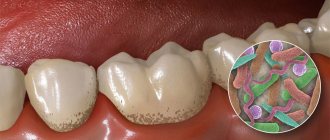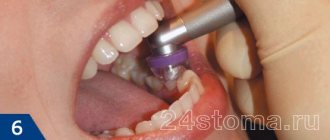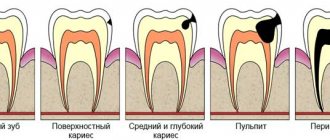In 1912, the German doctor Albert proposed a new method for treating infected tooth canals, which involved the use of resorcinol-formalin paste. It was believed that the latter has bactericidal and mummifying properties that can stop the decay of the pulp. This made it possible to seal and clean the dental canal from pathogenic microflora.
Factors influencing the popularity of the method
This method of root canal filling has gained wide popularity due to its low cost. In the territory of the former USSR, it was actively used for the treatment of chewing teeth. Factors that influenced the popularity of this method were as follows:
- the doctors were absolutely convinced that the composition of resorcinol-formalin paste was reliable and safe;
- the simplicity of the procedure, even specialists with little experience took on it;
- obtaining the desired result with a minimal set of manipulations;
- public availability.
Resorcinol-formalin method: preparatory stage
The essence of this method is to transform the pulp into a plastic-like aseptic strand, which would not be subject to dissolution under the influence of tissue microflora. Therefore, in order to avoid the development of “residual pulpitis,” the pulp must be devitalized before impregnation begins.
Filling canals using Albrecht technology is carried out in several stages. At the preparatory stage, attention is paid to filling the root canals, which were managed to pass along the entire length. Others are filled in to the extent possible. Then, to necrotize the tissue remnants of the damaged pulp, the mouths of each of them are drilled out. Three sessions are allotted for all manipulations.
At this stage, the specialist is preparing the solution. Start making a paste with 5 drops of formaldehyde, for which a glass plate is used. Afterwards, resorcinol is gradually added to it. Thorough stirring ensures its complete absorption by formaldehyde.
During impregnation, the patient must be placed in the dental chair in a position that would allow the impregnation solution to flow into the canal under the influence of gravity. Filling the teeth of the lower jaw requires an even fit, while a lying position with the head tilted back will be required in the case of treatment of teeth in the upper jaw.
Impregnation of channels with solution
After this, the procedure for impregnating the channels with the solution begins. How does this happen:
- saliva is isolated and the entire surface of the oral cavity is dried;
- no more than 2 drops of the substance are squeezed out from the prepared medicinal mixture using a pipette;
- using an endodontic instrument in dentistry, a solution is injected to the maximum possible depth of the canal of the affected tooth;
- if there are residual components of the substance, they are removed using a cotton swab;
- all actions are repeated three times;
- when it is not possible to penetrate directly to the mouth, a tampon pre-moistened in the treatment solution is applied to the area being treated;
- at the end, a special dentin bandage is used to tighten the orifice.
Subsequent stages
The patient's next session awaits a few days later. The doctor removes the dentin bandage and re-does all the manipulations that the affected areas were subjected to during the first procedure. Thus, they are additionally impregnated with resorcinol-formalin mass.
Then the solution used is modified. A specialist adds a catalyst to it on a pre-prepared glass plate. The latter is represented by 3 drops of chloramine, in other cases - 2 drops of sodium hydroxide. The prepared mixture completely seals the affected canal. Its filling with resorcinol-formalin substance is brought to the state of a tight mass. All excess is removed. A phosphate cement liner is then used to cover the orifice. In addition to it, a permanent filling material is fixed to the dental crown, thanks to which the treated cavity is closed.
Disadvantages of the method
At the time this method was proposed, no one asked how safe it was and whether there were contraindications to its use. Gradually, certain shortcomings were discovered, which prompted doctors to resort to less dangerous methods of treating carious lesions. To date, the following disadvantages of the resorcinol-formalin method are known.
Firstly, this is a high concentration of dangerous oncogenic substances. It is known that their presence provokes the occurrence of malignant tumors in different parts of the human body. Many doctors agree that a high percentage of cancer diseases during that period was associated with such dental intervention. The excessive toxicity of the substance affected the body with other pathologies, from which it was not possible to completely recover.
Secondly, this is the penetration of the composition into the bloodstream. Its gradual spread throughout the body has a detrimental effect on the cardiovascular and muscular systems, as well as the proper functioning of the liver, lungs, kidneys and other important organs.
It was also noted that some time after the filling procedure, tooth enamel and dentin begin to acquire a pink tint. This unaesthetic effect is caused by irritation of periodontal tissue as a result of resorcinol-formalin entering the apical fissure. Even with high-quality bleaching, it will not be possible to completely get rid of it. Clinical experience shows that the so-called resorbed teeth are fused to the adjacent bone tissue.
Many difficulties arise when analyzing radiographs. The reason for this is the non-radiographic contrast of the resorcinol-formalin paste used to fill the root canals. A good specialist, having visually identified a void in the canal, will definitely recommend refilling it. But given that over time the durability of the mixture becomes comparable to the strength of glass, it will be difficult to follow the recommendations.
Effect of endodontic solutions on resorcinol-formalin paste
Author: Ronald N. Vranas
This study determined the ability of any of four endodontic solutions to have a softening effect on resorcinol-formalin paste, as well as what differences exist between the dissolving capabilities of these solutions. Resorcinol, formalin and zinc oxide were mixed and left for 30 days. Test solutions: 0.9% sodium chloride, 5.25% sodium hypochlorite, chloroform and Endosolv R. Seven solution samples were tested and an additional seven served as controls. Each sample was saturated with one of the solutions, and the penetration depth was tested after 1, 2, 5, 10 and 20 minutes. using a strain gauge. After 2 min. hypochlorite and sodium chloride solutions had significantly better penetration than other samples (p<0.0010). Sodium hypochlorite was superior to all other solutions after 5 min. This study shows that both hypochlorite and sodium chloride have a significant softening effect within 2 minutes.
The main goal of filling root canals is to fill the root canal system three-dimensionally. Grossman stated that the ideal root canal filling material should be easy to insert into the canal, fill the canal laterally and apically, should not shrink, be resistant to washout, be bacteriostatic, be radiopaque, should not stain the tooth structure or irritate the periapical tissue, should be sterile before insertion and also be able to be easily removed from the root canal if necessary. Despite this, gutta-percha, in any of the presented forms, although it does not meet all the above requirements, is still considered the best obturation material for root canals.
The pastes that were used for filling root canals were zinc oxide eugenol (ZOE) or resin-based (without ZOE). Due to the lack of apical control and release into the periapical tissues, which are subsequently exposed to toxic effects, the pastes have not been highly regarded as a suitable root canal filling material.
Some eastern bloc countries, mainly Russia, still use pastes to treat pulpitis. Although there are many variations of pastes used, their main component is resorcinol. This material is a white crystalline powder that turns pink when it comes into contact with air, light or metal. The mixture used to fill root canals is made of resorcinol, zinc oxide and formaldehyde. These three ingredients are mixed together to form a paste, which is then applied to the root canal. Once cured, this material creates a virtually impenetrable barrier and changes the color of tooth structures to shades of red or pink. As a rule, this paste is placed without adequate treatment of the root canal from decay, which subsequently leads to the appearance of periapical pathologies in many teeth. If these teeth are to be saved, they require retreatment or apical surgery. Since the migrating population
The dangers of the resorcinol-formalin method
The elasticity and stability of hard tooth tissues significantly deteriorates. The combination of formaldehyde with resorcinol provokes the coagulation of proteins in tissues. As a result, dentin, which is considered a fairly hard substance, loses all its quality indicators. The patient is forced to once again seek help from a dental clinic. However, a damaged dentin structure reduces the specialist’s chances of bringing the oral cavity into an impeccable appearance. The presence of such a filling can develop hypercementosis, manifested by intensive covering of the roots with cement. When using dental instruments, it tends to crumble. Doctors note that installing a crown on such a tooth is impossible. And there is only one way out - removal of the unit followed by prosthetics.
This treatment method causes frequent inflammatory processes in the surrounding tissues. Due to drug preservation of the pulp, the patient is not aware of the presence of hidden infectious processes. Their spread affects adjacent gums and roots. Due to the toxicity of the substance used, gradual destruction of periodontal tissue begins. In addition, other foci of infection form in the form of a cyst or phlegmon. The danger lies in the asymptomatic nature of these processes.
Why re-treat such teeth?
The use of resorcinol-formalin mixture has several disadvantages:
- It does not provide a hermetically sealed root canal filling. Because of this, the infection may gradually develop or recur even after careful treatment.
- Formalin is hygroscopic. It “pulls” moisture from bone tissue, which becomes fragile and brittle because of this. Dentin also becomes fragile. It loses strength so much that it easily crumbles under dental instruments.
- Due to the toxicity of the components of the mixture, after filling, gum atrophy, recession of the soft tissues surrounding the tooth, and exposure of the root neck may begin.
- Filling with a resorcinol-formalin mixture kills the nerve, and there is no pain in the tooth treated in this way. If the inflammation continues, there are no symptoms for quite a long time. Noticeable signs appear already at the severe stage.
- Due to the individual components of the mixture, the color of the dentin changes: it can become dark, gray, brown or pinkish. Stained dentin shines through the enamel, changing its shade so that it stands out sharply in the dentition. Bleaching does not help restore the original shade of enamel, and due to the fragility of hard tissues, it is dangerous to use.
More than 50% of teeth treated using the resorcinol-formalin method require retreatment several years later. If the filling was not performed to the root apex, in 80% of cases bone tissue destruction occurs, which also requires re-treatment.
Consequences
Scientific studies confirm that formaldehyde-containing endodontic filling materials lead to irreversible destruction of connective tissue and bone, and paresthesia of the lower jaw. Chronic infections of the maxillary sinus cannot be ruled out. Moreover, the damage from formaldehyde is not limited to tissue damage only in the root canal. The components contained in the proposed sealants tend to penetrate into the body itself.
Resorcinol-formalin paste in dentistry, the consequences of which are very dangerous and irreversible, is prohibited in most countries of the world. So, in Switzerland it was excluded more than 70 years ago. In America, a doctor who dares to offer this method to a patient risks losing his license.
What is the danger?
The main reason for such a long existence of the resorcinol filling method is its low cost, ease of use and effectiveness. But in many countries around the world this method is strictly prohibited and has not been used for more than 70 years. Dentists practicing today in European countries and the USA do not even know about its existence.
But, in the USSR, this method was the main one in the treatment of dental canals, and some dentists still use it. So why can’t resorcinol-formalin paste be used as a filling material for dental canals and pulp?
It's all about the composition of the paste. The formaldehyde and resorcinol it contains are hazardous toxins that have been proven by many years of research to have carcinogenic and mutagenic properties.
Formaldehyde, which is part of the filling agent, penetrates from the tooth canal into the blood and spreads throughout the body, reaching the kidneys, lungs, liver and other organs. When these substances settle in them, they can cause the development of cancer.
Another negative side of resorcinol-formalin is that a tooth, once treated with this substance, is practically not subject to re-treatment. As the practice of using this method shows, the paste does not always completely fill the dental canals. Therefore, there remains a risk of resumption of the inflammatory process in the hermetically sealed canal.
Cysts and ulcers form on the root of the tooth.
Almost 50% of cases of teeth treated with resorcinol require re-treatment, which cannot be performed for the following reasons:
- X-rays show canals filled with paste as voids, so there is no possibility of an accurate diagnosis, and, therefore, there is no confidence in the correct treatment strategy.
- After treatment with resorcinol, the tooth becomes pathologically brittle and crumbles under dental instruments;
- After resorcinol, it is impossible to fill the canal again, as hypercementosis develops - cement deposition in the root area. The root grows firmly into the bone, and filling it can cause serious complications, as well as removal.
Not only is treatment after resorcinol extremely problematic, but prosthetics using a resorcinol-formalin tooth is also impossible.
The fact is that fragile teeth, due to treatment with this method, cannot be used as a support for orthodontic dentures.
Resorcinol-formalin technology in Russia
Despite the fact that dental practice offers safe methods of root canal treatment, in Russia the resorcinol-formalin method continues to exist. It is mainly used by peripheral specialists, who are probably aware of its harmful effects. But the lack of funds for high-quality materials and equipment for endodontics forces them to use easily accessible means.
The indestructibility of the method is also associated with its low cost and the reluctance of citizens to pay for quality service. In 2001, the All-Russian Dental Association appealed to the Central Commission for Higher Education with a demand to exclude the resorcinol-formalin method from the curriculum of dental faculties.
In 1912, Dr. Albrecht proposed a method of filling infected tooth canals using formaldehyde saturated with resorcinol (resorcinol is a phenol derivative). The method is based on the bactericidal and mummifying properties of this mixture, due to which the decay of incompletely removed pulp is stopped. The mixture slowly hardens in the tooth canals, which was thought to seal them. The method turned out to be cheap, easy to use and widely used. In our country, during Soviet times, it was used in the treatment of chewing teeth (molars) in 84% of cases, and continues to be used now by many dentists, symbolizing poor quality treatment in professional circles.
The fact is that many years of research have cast doubt on the effectiveness of the resorcinol-formalin method and have proven that its use is dangerous for the body . Formalin and resorcinol are toxic substances that have carcinogenic and mutagenic properties. Once in the canals of the tooth, formaldehyde (the active ingredient in formalin) gradually spreads throughout the body - it was found in the liver and kidneys, in the lungs, and in the muscles. It is quite possible that in many cases dangerous diseases were provoked by dental treatment using resorcinol-formalin. Therefore, all progressive dentists have unanimously said “no” to this method of treating root canals for more than 20 years.
For about ten years, the patient may not experience pain from the treated tooth, but this does not mean that everything is fine. The hidden inflammatory process continues, and cysts form on the roots of the tooth. Due to the toxic effect of the resorcinol-formalin mixture, the gums gradually atrophy, exposing the roots of the tooth. The result is that in 75% of cases repeated intervention is required. Retreatment or removal of such a tooth is associated with many difficulties . On x-rays, the “resorcinol-formalin” canals of the tooth appear empty, which makes diagnosis difficult. The tooth becomes brittle and begins to crumble . The color of the tooth always changes - it becomes pinkish or dark. Teeth do not whiten after treatment with the resorcinol-formalin method. As a result, the doctor who has to re-treat the tooth cannot guarantee a positive outcome even when using modern effective methods . And, the saddest thing is that “resorcinol-formalin” teeth, as a rule, cannot be used as a support for a prosthesis , and if you choose between a fixed bridge and a removable prosthesis, you will have to make a decision in favor of a removable prosthesis with all its inconveniences and disadvantages.
In Russia, the leaders of the Endodontic Section of the Dental Association decided not to recommend the resorcinol-formalin method for clinical use, and also to petition for its exclusion from the training program at dental faculties. However, this method is still used today. Its “survivability” is apparently due to the cheapness and low solvency of the majority of our fellow citizens, and, in addition, their unjustifiably indifferent and frivolous attitude towards their health. Therefore, when faced with the need for root canal treatment, always ask your dentist if he is going to use the resorcinol-formalin method. And if the answer is yes, we recommend finding another doctor.
(based on Internet sources)
-What analogues of this method of treating pulpitis and periodontitis are available in our clinic?
— One of the effective modern methods is the method of lateral condensation of gutta-percha. In the West, it is used to treat tooth canals in approximately 80% of cases.
The essence of the method is that the tooth canal, after removal of the pulp and mechanical treatment with special instruments, is filled with thin and flexible rods (pins) of gutta-percha in combination with a special hardening paste. Gutta-percha is the dried sap of the gutta-percha tree, which grows in Brazil and Malaysia. Plastic gutta-percha pins can be used to fill a tooth canal of any thickness and curvature; they do not collapse inside the canals. The paste, used in combination with gutta-percha pins, has an antiseptic effect and hermetically seals the tooth canal. All drugs used are non-toxic and do not irritate tooth tissue. So the treatment turns out to be quite effective and can significantly extend the life of the tooth.











